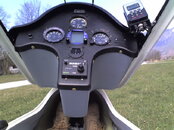Lobzilla
Contributor
Is there anything that shows the important items Depth - Time(total and resettable timer) - Ascent Rate in an easy to read fashion?
The philosophy here is that the brain is the computer and the unit shows values that are hard or impossible to derive from our senses.
I am getting progressively frustrated with computers that:
a) require several seconds of looking at them to get some situational awareness (because they show everything except what I care about)
b) keep blinking and beeping (because they do not understand that sometimes you breathe a tank down on purpose for example)
Oh, and if the unit would not require to sell my car that would be great too.
The philosophy here is that the brain is the computer and the unit shows values that are hard or impossible to derive from our senses.
I am getting progressively frustrated with computers that:
a) require several seconds of looking at them to get some situational awareness (because they show everything except what I care about)
b) keep blinking and beeping (because they do not understand that sometimes you breathe a tank down on purpose for example)
Oh, and if the unit would not require to sell my car that would be great too.
Last edited:




